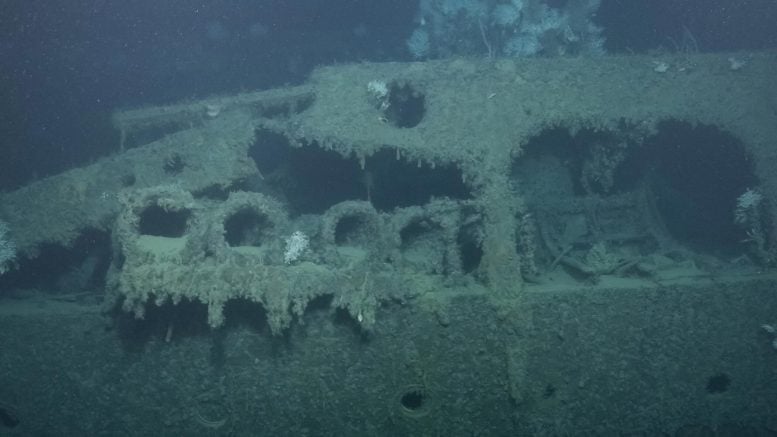
A new survey revealed and mapped 13 WWII wrecks. The mission combined archaeology, technology, and remembrance.
An international team led by the Ocean Exploration Trust, working aboard the Exploration Vessel (E/V) Nautilus, has carried out an extensive archaeological survey of World War II shipwrecks in Iron Bottom Sound, completed on August 1, 2025.
Over the course of the 22-day expedition, the crew visually identified and examined 13 wreck sites, several of which hold major historical significance. Four of the vessels were recorded for the first time, including the bow section of the heavy cruiser USS New Orleans (CA 32) and the Imperial Japanese destroyer Teruzuki, both lost during fierce naval clashes in the Guadalcanal campaign.
Other vessels surveyed in high resolution include:
- USS Vincennes (CA 44)
- USS Astoria (CA 34)
- USS Quincy (CA 39)
- USS Northampton (CA 26)
- USS Laffey (DD 459)
- USS DeHaven (DD 469)
- USS Preston (DD 379)
- USS Walke (DD 416)
- HMAS Canberra (D33)
- Imperial Japanese Navy destroyer Yudachi
- and an unidentified landing barge.
Documenting history with new technology
“It was wonderful to return to Iron Bottom Sound, where we discovered Japanese, Australian, and American warships over 34 years ago,” said Dr. Robert Ballard, President of Ocean Exploration Trust. “This expedition was special, allowing us to film these sites in a manner not possible back then, as well as document other ships, while at the same time sharing our work live to the entire world.”
The expedition relied on advanced underwater robotics, including remotely operated vehicles (ROVs) launched from Nautilus and an uncrewed surface vessel (USV) called DriX, which was remotely controlled from a land-based station in Honiara. Developed by the University of New Hampshire, the DriX system mapped more than 1,000 square kilometers of seafloor, creating the most detailed charts of Iron Bottom Sound ever produced and pinpointing dozens of potential wreck sites.
“The use of our uncrewed vessel allowed a tremendous increase in exploration efficiency as we were able to continuously map and identify potential targets while the Nautilus was deploying its ROVs,” said Dr. Larry Mayer, Director, Center for Coastal and Ocean Mapping at the University of New Hampshire. “This technological achievement, combined with the tremendous historical significance of our discoveries, made this one of the most rewarding missions I have ever participated in.”
Remembering the battles of Guadalcanal
Iron Bottom Sound, located between Guadalcanal, Savo, and Nggela Islands, was the site of five major naval battles fought between August and December 1942. The campaign claimed more than 111 ships and 1,450 aircraft, with over 20,000 lives lost, and many wrecks from the battles remain undiscovered.
“Join the SciTechDaily newsletter.
Full article can be found at: https://scitechdaily.com/explorers-discover-long-lost-naval-vessels-from-wwii-guadalcanal-battles/







